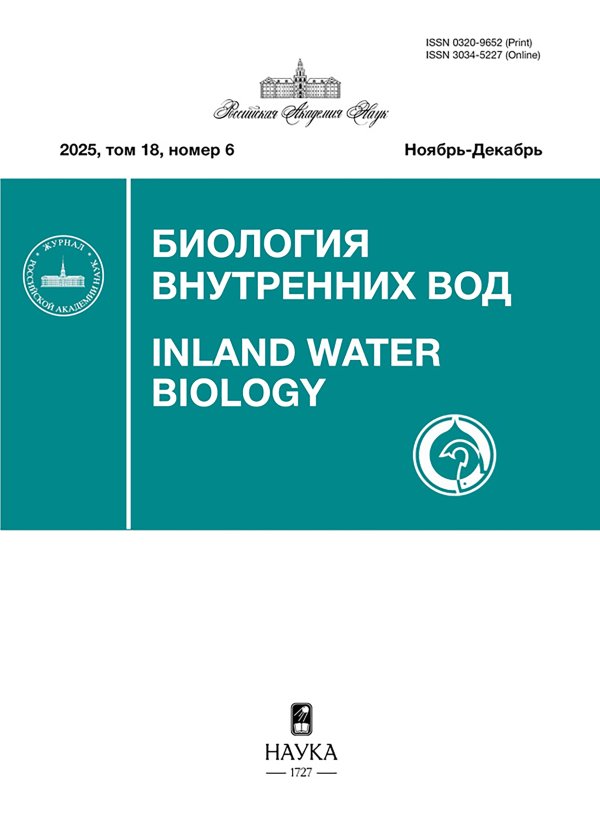Spatiotemporal Variation of Planktonic Rotifers in Surface Water of a Eutrophic Reservoir in the Southern Subtropical Region of China (2011‒2020)
- Authors: Gao Y.1,2,3,4, Lai Z.1,2,3,4, Liu E.1,5, Yang W.1,2,3,4, Liu Q.1,2,3,4
-
Affiliations:
- Pearl River Fisheries Research Institute, Chinese Academy of Fishery Sciences
- Fishery Ecological Environment Monitoring Center of Pearl River Basin, Ministry of Agriculture and Rural Affairs
- Guangzhou Scientific Observing and Experimental Station of National Fisheries Resources and Environment
- Key Laboratory of Aquatic Animal Immune Technology of Guangdong Province
- College of Fisheries and Life Science, Shanghai Ocean University
- Issue: No 2 (2023)
- Pages: 194-195
- Section: ЗООПЛАНКТОН, ЗООБЕНТОС, ЗООПЕРИФИТОН
- URL: https://journals.rcsi.science/0320-9652/article/view/134949
- DOI: https://doi.org/10.31857/S0320965223020286
- EDN: https://elibrary.ru/BUUMGT
- ID: 134949
Cite item
Full Text
Abstract
The trophic status of a reservoir in the southern subtropical region of China was evaluated by non-biological environmental factors from 2011 to 2020. The relationship between the community structure of planktonic rotifers and eutrophication was examined based on the species composition, dominant species, standing crop, and biodiversity index of the planktonic rotifers in the surface water. The results showed that the reservoir was continually slightly eutrophic. The dominant species of planktonic rotifers were mesosaprobic species such as Polyarthra trigla and Brachionus angularis. The overall abundance fluctuated between 438 and 1360 ind./L; biomass fluctuated between 520 and 1613 μg/L, and the biodiversity index fluctuated between 1.27 and 2.43. Redundancy analysis showed that chlorophyll a content, water transparency, total phosphorus, and water temperature had significant impacts on the abundance of planktonic rotifers. The results demonstrate a close relationship between the community structure of planktonic rotifers and eutrophication. In other words, eutrophication was the main cause of the changes in the community structure of planktonic rotifers in surface water.
About the authors
Yuan Gao
Pearl River Fisheries Research Institute, Chinese Academy of Fishery Sciences; Fishery Ecological Environment Monitoring Center of Pearl River Basin, Ministry of Agriculture and Rural Affairs; Guangzhou Scientific Observing and Experimental Station of National Fisheries Resources and Environment; Key Laboratory of Aquatic Animal Immune Technology of Guangdong Province
Email: liuqfwh@163.com
China, Guangzhou; China, Guangzhou; China, Guangzhou; China, Guangzhou
Zini Lai
Pearl River Fisheries Research Institute, Chinese Academy of Fishery Sciences; Fishery Ecological Environment Monitoring Center of Pearl River Basin, Ministry of Agriculture and Rural Affairs; Guangzhou Scientific Observing and Experimental Station of National Fisheries Resources and Environment; Key Laboratory of Aquatic Animal Immune Technology of Guangdong Province
Email: liuqfwh@163.com
China, Guangzhou; China, Guangzhou; China, Guangzhou; China, Guangzhou
Erchun Liu
Pearl River Fisheries Research Institute, Chinese Academy of Fishery Sciences; College of Fisheries and Life Science, Shanghai Ocean University
Email: liuqfwh@163.com
China, Guangzhou; China, Shanghai
Wanling Yang
Pearl River Fisheries Research Institute, Chinese Academy of Fishery Sciences; Fishery Ecological Environment Monitoring Center of Pearl River Basin, Ministry of Agriculture and Rural Affairs; Guangzhou Scientific Observing and Experimental Station of National Fisheries Resources and Environment; Key Laboratory of Aquatic Animal Immune Technology of Guangdong Province
Email: liuqfwh@163.com
China, Guangzhou; China, Guangzhou; China, Guangzhou; China, Guangzhou
Qianfu Liu
Pearl River Fisheries Research Institute, Chinese Academy of Fishery Sciences; Fishery Ecological Environment Monitoring Center of Pearl River Basin, Ministry of Agriculture and Rural Affairs; Guangzhou Scientific Observing and Experimental Station of National Fisheries Resources and Environment; Key Laboratory of Aquatic Animal Immune Technology of Guangdong Province
Author for correspondence.
Email: liuqfwh@163.com
China, Guangzhou; China, Guangzhou; China, Guangzhou; China, Guangzhou
References
Supplementary files










